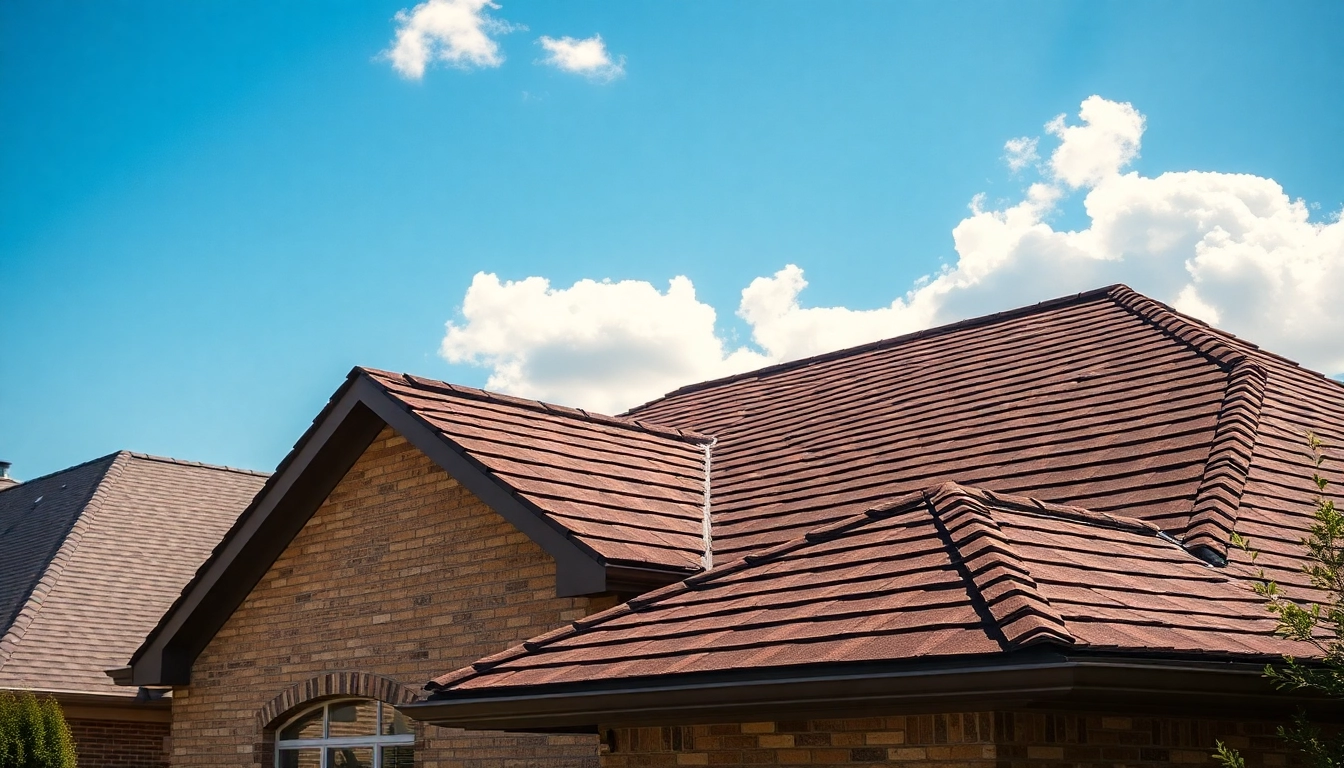Understanding Asphalt Shingle Roofing
What is Asphalt Shingle Roofing?
Asphalt shingle roofing is one of the most common roofing systems used in residential buildings across the United States, particularly in regions like Texas where weather conditions can vary significantly. This type of roofing consists of individual overlapping elements, often referred to as shingles, made primarily from asphalt, fiberglass, and organic materials. The versatility and cost-effectiveness of asphalt shingles make them a popular choice among homeowners looking for both durability and aesthetic appeal.
Benefits of Asphalt Shingle Roofing in Texas
Asphalt shingles provide a myriad of benefits, especially suited for the Texas climate. Here are some key advantages:
- Durability: Designed to withstand harsh weather elements including intense heat, storms, and occasional hail, quality asphalt shingles prove their resilience over time.
- Cost-Effectiveness: Asphalt shingle roofs are relatively inexpensive compared to other roofing materials, making them an attractive option for many homeowners in Texas.
- Easy Installation: The installation of asphalt shingles is straightforward, allowing contractors to complete projects more swiftly, which can translate to lower labor costs.
- Variety of Styles and Colors: Available in a wide range of styles, colors, and textures, asphalt shingles can complement various architectural designs and personal aesthetic preferences.
- Energy Efficiency: Advanced designs include reflective properties that can help reduce cooling costs, crucial for the hot Texas summers.
Types of Asphalt Shingles Available
In Texas, homeowners have several options when it comes to selecting asphalt shingles. Each type varies in terms of cost, durability, and appearance:
- 3-Tab Shingles: These are the most basic and affordable type of shingles. They are flat and not as durable as other options but are easy to install.
- Architectural Shingles: Featuring a three-dimensional appearance, these shingles are thicker and provide better durability and weather resistance than 3-tab shingles.
- Laminated Shingles: These are similar to architectural shingles but often come with additional layers for enhanced durability and a varied visual appeal.
- Luxury Shingles: High-end options that mimic slate or wood shake roofs, luxury shingles offer exceptional aesthetics and durability, but at a higher price point.
Choosing the Right Asphalt Shingle for Your Texas Home
Factors to Consider When Selecting Asphalt Shingles
Choosing the right asphalt shingle involves considering several factors, including:
- Climate and Weather Conditions: Texas is known for extreme weather variations, so choosing shingles rated for high wind and hail resistance is crucial.
- Budget: Determine your budget upfront. While luxury options may offer greater aesthetics, they also come with a higher initial cost.
- Roof Pitch: The angle of your roof affects drainage. Steeper roofs may benefit from shingles designed for better runoff to prevent water pooling.
- Aesthetic Appeal: Consider architectural styles; choose shingles that align with the overall look of your home while considering your neighborhood’s aesthetic to maintain property value.
Cost-Effective Options for Texas Homeowners
While many homeowners aim for the best quality, affordability remains a priority. Options like 3-tab shingles can provide basic protection at a lower cost, while architectural shingles can deliver a balance of quality and price, making them a popular choice for a roofing system that won’t break the bank.
Durability and Weather Resistance
As mentioned previously, durability is a key feature of asphalt shingles. Texas homeowners should specifically look for shingles with warranties ranging from 20 to 50 years. Additionally, understanding manufacturer ratings for wind resistance and impact resistance can provide insights into long-term performance.
Installation Process for Asphalt Shingle Roofing
Preparing Your Roof for Installation
Proper preparation is crucial for a successful asphalt shingle installation. Homeowners should clear the roof of debris, repairing any underlying damage to the decking. It is also essential to check for proper ventilation, as inadequate air flow can lead to premature shingle deterioration.
Step-by-Step Guide to Asphalt Shingle Installation
The installation process of asphalt shingle roofing consists of several steps:
- Lay Down Underlayment: Begin by applying a waterproof underlayment over the entire roof. This acts as a second line of defense against moisture intrusion.
- Install Starter Shingles: Along the eaves, install starter shingles to create a watertight seal and improve shingle adherence.
- Lay Asphalt Shingles: Working from the bottom to the top, lay the first row of shingles overlapping the starter course. Ensure each shingle is properly spaced and secured with nails.
- Continue Up the Roof: Proceed in an organized manner, paying attention to the staggered patterns for enhanced drainage and aesthetics.
- Install Ridge Cap Shingles: Finish by installing ridge cap shingles at the peaks of the roof for a finished look and additional waterproofing.
Common Installation Pitfalls to Avoid
To achieve a quality installation, avoid common mistakes such as:
- Ignoring weather conditions, which can cause shingle damage if installed during rain or extreme heat.
- Using improper nailing techniques, which can lead to wind lift and leaks.
- Neglecting ventilation needs, which can lead to excess heat build-up and shorten the lifespan of the shingles.
Maintenance Tips for Asphalt Shingle Roofing
Routine Inspections and Repairs
Regular inspections should be performed at least twice a year and after significant weather events. Look for loose or missing shingles, granule loss, and signs of water damage. Early detection of potential issues can save homeowners from costly repairs down the line.
Cleaning Your Asphalt Shingle Roof
Keeping your roof clean can extend its lifespan. A simple wash with a mixture of dish soap and water can remove algae and moss, which tend to thrive in the humid Texas climate. However, avoid pressure washing, which can damage the shingles.
Signs of Damage and When to Call a Professional
Homeowners should be vigilant for signs of damage such as:
- Shingles that are buckling, curling, or missing altogether.
- Water stains or leaks inside the home, indicating potential roof failure.
- Excess granule loss in gutters, which can indicate shingle wear.
If any of these signs occur, consulting a professional roofing contractor is recommended to evaluate and address the issue appropriately.
Frequently Asked Questions about Asphalt Shingle Roofing
How Long Do Asphalt Shingles Last?
Depending on the quality and type, asphalt shingles typically last between 15 to 30 years. High-grade luxury shingles may last up to 50 years with the right maintenance and installation.
Are Asphalt Shingles Energy Efficient?
Yes, newer asphalt shingles are designed with reflective properties that can keep homes cooler in summer, potentially leading to lower energy bills. Look for shingles labeled as Energy Star certified for verified environmentally-friendly options.
What Are the Common Issues with Asphalt Shingle Roofing?
Common issues include granule loss, curling, buckling, and leaks. Regular maintenance, such as cleaning and inspections, can help mitigate these problems and extend your roof’s longevity.
For reliable solutions regarding asphalt shingle roofing Texas, consider reaching out to quality roofing professionals familiar with the regional climate and standards.



